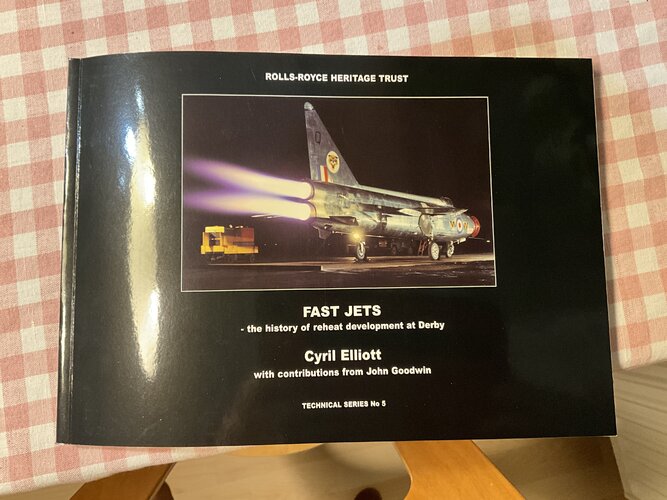the-tml
ACCESS: Restricted
- Joined
- 15 April 2021
- Messages
- 5
- Reaction score
- 5
I am building a 3D model (in Blender) of the Lightning, including the engine, and I easily get fascinated by details. Like the reheat and how the moving parts in its nozzle behave. I have some questions:
I have certainly not studied gas turbine technology formally, but I recall often seen mentioned that to achieve supersonic speeds, the nozzle needs to be convergent-divergent. The Lightning reached Mach 2 but still its nozzle is not C-D, is it? There is just one set of petals forming a single primary converging nozzle. Or is the divergent section "invisible" and formed of cooler air surrounding the hot exhaust, expanding in an ordered fashion, thus forming a divergent secondary nozzle?
There are some lovely pictures and videos in a Facebook group of one of the surviving aircraft, that show an engine and reheat being refurbished, without the usual shroud structures: https://www.facebook.com/XR724/photos/pb.100063629138026.-2207520000/682990845692038/ , View: https://www.facebook.com/XR724/videos/198777057937936
etc. But the opening and closing of the nozzle puzzles me a bit:
The aircrew manual for the F.6 ("Lightning F Mk 3, T MK 5 and F Mk 6 Aircrew Manual Book 1 AP 101B-1003, 5 and 6-15A", which can be bought as a PDF from sites that sell scanned historical aircraft documentation) gives this information (Part 1, Chapter 3, Page 6) says:
I also looked at Rolls-Royce's old jet engine reheat nozzle related patents on patents.google.com and found several, however none of them matches how the Lightning's reheat looks, I think. Those designs that were patented are nicely described, though. Even if the language of patents is rather cumbersome and it takes some time to get used to, if you read the text carefully and cross-reference to the figures, you do get an understanding of how the parts move in relation to each others. For instance https://patents.google.com/patent/US2780056A .
I have certainly not studied gas turbine technology formally, but I recall often seen mentioned that to achieve supersonic speeds, the nozzle needs to be convergent-divergent. The Lightning reached Mach 2 but still its nozzle is not C-D, is it? There is just one set of petals forming a single primary converging nozzle. Or is the divergent section "invisible" and formed of cooler air surrounding the hot exhaust, expanding in an ordered fashion, thus forming a divergent secondary nozzle?
There are some lovely pictures and videos in a Facebook group of one of the surviving aircraft, that show an engine and reheat being refurbished, without the usual shroud structures: https://www.facebook.com/XR724/photos/pb.100063629138026.-2207520000/682990845692038/ , View: https://www.facebook.com/XR724/videos/198777057937936
etc. But the opening and closing of the nozzle puzzles me a bit:
The aircrew manual for the F.6 ("Lightning F Mk 3, T MK 5 and F Mk 6 Aircrew Manual Book 1 AP 101B-1003, 5 and 6-15A", which can be bought as a PDF from sites that sell scanned historical aircraft documentation) gives this information (Part 1, Chapter 3, Page 6) says:
So how come we see here that the nozzle is both closed and opened by operating the screw jacks? Is the manual wrong, or has this been solved somehow ad-hoc in this test?Jet Pipe Nozzle
The variable position nozzle is controlled by eight screw jacks which are driven and synchronised by an annular gear. An air motor, powered by engine compressorbleed air, drives the annular gear in response to mechanical inputs from an air motor control unit (AMCU). Gas stream pressure provides the nozzle opening force and the nozzle is dosed or held fixed by the annular gear.
I also looked at Rolls-Royce's old jet engine reheat nozzle related patents on patents.google.com and found several, however none of them matches how the Lightning's reheat looks, I think. Those designs that were patented are nicely described, though. Even if the language of patents is rather cumbersome and it takes some time to get used to, if you read the text carefully and cross-reference to the figures, you do get an understanding of how the parts move in relation to each others. For instance https://patents.google.com/patent/US2780056A .

